| Season Start: | 02 September 1978 | | Season End: | 24 February 1979 | | Season Length: | 26 Weeks | | Writers: | Bob Baker, Dave Martin, David Fisher, Douglas Adams and Robert Holmes | | Directors: | Darrol Blake, George Spenton-Foster, Michael Hayes, Norman Stewart and Pennant Roberts | | Producers: | David Maloney and Graham Williams | | Script Editors: | Anthony Read and Douglas Adams | | Visual Effects: | Colin Mapson, Dave Havard, John Horton, Len Hutton, Mat Irvine and Tony Harding | | Title Sequence: | Bernard Lodge | | Title Music: | Ron Grainer and the BBC Radiophonic Workshop. Arranged by Delia Derbyshire |
|
Incarnation of the Doctor: |
The Fourth Doctor
|
| Number of
Companions: |
2 |
| The
Companions: |
Romana 1 (Joins and Departs) and K9 Mk II (Joins)
|
| Number of
Stories: |
6
|
| Number of
Incomplete/Missing Stories: |
0
|
| Number of
Episodes: |
26
|
| Number of
Incomplete/Missing Episodes: |
0
|
| Percentages: |
| Full Stories Held | 100% | | Episodes Held | 100% |
|
| Doctor Who Magazine Poll (1998) | | | Doctor Who Magazine Poll (2009) | | | Doctor Who Magazine Poll (2014) | |
|
 'We have the power to do anything we like. Absolute power over every particle in the universe. Everything that has ever existed and ever will exist. As from this moment - are you listening to me Romana? Because if you're not listening, I can make you listen. Because I can do anything. As from this moment there's no such thing as free will in the entire universe. There's only my will because I possess the Key to Time.' 'We have the power to do anything we like. Absolute power over every particle in the universe. Everything that has ever existed and ever will exist. As from this moment - are you listening to me Romana? Because if you're not listening, I can make you listen. Because I can do anything. As from this moment there's no such thing as free will in the entire universe. There's only my will because I possess the Key to Time.'
The Doctor
(The Armageddon Factor) |
|
|
|
|
| |
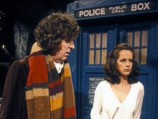 |
| The Doctor and Romana |
|
 The sixteenth season of Doctor Who consisted of the standard, for the time, of six stories and twenty-six episodes. The sixteenth season of Doctor Who consisted of the standard, for the time, of six stories and twenty-six episodes.
 This season marked a triple milestone for the show as it contained the 100th story ("The Stones of Blood"), the 500th episode (episode 1 of "The Armageddon Factor") and an uncelebrated 15th anniversary. This season marked a triple milestone for the show as it contained the 100th story ("The Stones of Blood"), the 500th episode (episode 1 of "The Armageddon Factor") and an uncelebrated 15th anniversary.
 This season is sometimes colloquially known as The Key to Time season (and has been released on DVD under this title) after the story arc involving the quest for The Key to Time. Although not the first season to consist of linked stories (Season Eight in 1971 was the first, as all the stories that year featured The Master), it was the first to be recognized as having a season-long arc. Although multi-story arcs would occur again it would not be until Season Twenty Three (better known as The Trial of a Time Lord season) that a whole season would have a season-long arc. Loose season-long story arcs have also been used in the revived series. This season is sometimes colloquially known as The Key to Time season (and has been released on DVD under this title) after the story arc involving the quest for The Key to Time. Although not the first season to consist of linked stories (Season Eight in 1971 was the first, as all the stories that year featured The Master), it was the first to be recognized as having a season-long arc. Although multi-story arcs would occur again it would not be until Season Twenty Three (better known as The Trial of a Time Lord season) that a whole season would have a season-long arc. Loose season-long story arcs have also been used in the revived series.
 This season is also remembered for the introduction of the Black and White Guardians as well as companion Romana. This season is also remembered for the introduction of the Black and White Guardians as well as companion Romana.
 The Black Guardian, who would not appear until "The Armageddon Factor", was played by Valentine Dyall. The Black Guardian is also responsible for The Doctor fitting a a randomiser to the TARDIS guidance systems to avoid the wrath of the Black Guardian. This randomiser would remain installed until the 1980 story "The Leisure Hive". Valentine Dyall would finally return as the Black Guardian in the Black Guardian Trilogy, a set of three Fifth Doctor stories consisting of "Mawdryn Undead", "Terminus" and "Enlightenment". The Black Guardian, who would not appear until "The Armageddon Factor", was played by Valentine Dyall. The Black Guardian is also responsible for The Doctor fitting a a randomiser to the TARDIS guidance systems to avoid the wrath of the Black Guardian. This randomiser would remain installed until the 1980 story "The Leisure Hive". Valentine Dyall would finally return as the Black Guardian in the Black Guardian Trilogy, a set of three Fifth Doctor stories consisting of "Mawdryn Undead", "Terminus" and "Enlightenment".
 The most popular aspect of this season was the introduction of the Time Lady Romanadvoratrelundar - or Romana for short. As history would show there have been two incarnations of Romana appearing in the television show (a third incarnation of Romana would also be involved with the Eighth Doctor in the novelisations). The first incarnation of Romana was played by Mary Tamm who would only accompany The Doctor during this season. By coincidence, Mary Tamm and Louise Jameson (who had played the part of Leela up until the previous season) had trained together at the Royal Academy of Dramatic Arts. Since then, Mary Tamm had made several television appearances in shows like Coronation Street, and had also earned a number of film credits, including The Odessa File and The Likely Lads. The most popular aspect of this season was the introduction of the Time Lady Romanadvoratrelundar - or Romana for short. As history would show there have been two incarnations of Romana appearing in the television show (a third incarnation of Romana would also be involved with the Eighth Doctor in the novelisations). The first incarnation of Romana was played by Mary Tamm who would only accompany The Doctor during this season. By coincidence, Mary Tamm and Louise Jameson (who had played the part of Leela up until the previous season) had trained together at the Royal Academy of Dramatic Arts. Since then, Mary Tamm had made several television appearances in shows like Coronation Street, and had also earned a number of film credits, including The Odessa File and The Likely Lads.
 It had been hoped that Mary Tamm would stay on and continue playing the part of Romana into the following season but having become disenchanted with her character development the final story of this season ("The Armageddon Factor") would become her last. Ironically Lalla Ward, who would become the second incarnation of Romana, guest stars as Princess Astra in "The Armageddon Factor". She immediately hit it off with the Doctor Who cast and crew, especially Tom Baker, the consequence of which would result in her taking over the role of Romana from Mary Tamm in the next season’s opening story "Destiny of the Daleks". It had been hoped that Mary Tamm would stay on and continue playing the part of Romana into the following season but having become disenchanted with her character development the final story of this season ("The Armageddon Factor") would become her last. Ironically Lalla Ward, who would become the second incarnation of Romana, guest stars as Princess Astra in "The Armageddon Factor". She immediately hit it off with the Doctor Who cast and crew, especially Tom Baker, the consequence of which would result in her taking over the role of Romana from Mary Tamm in the next season’s opening story "Destiny of the Daleks".
 In addition to her theatrical work, Mary Tamm continued to make numerous appearances on television, including Jonathan Creek, Agatha Christie’s Poirot, The New Adventures of Robin Hood and Doctors. Mary Tamm also returned to play Romana in the Gallifrey series of audio plays from Big Finish Productions in 2005. In addition to her theatrical work, Mary Tamm continued to make numerous appearances on television, including Jonathan Creek, Agatha Christie’s Poirot, The New Adventures of Robin Hood and Doctors. Mary Tamm also returned to play Romana in the Gallifrey series of audio plays from Big Finish Productions in 2005.
 Being the last story of the season "The Armageddon Factor" became the last Doctor Who story that Script Editor Anthony Read would work on in this role. After leaving the show Anthony Read continued writing for television, including episodes of The Professionals and Sapphire & Steel, as well as next season’s "The Horns of Nimon". He also adapted the John Wyndham novel "Chocky" and served as script editor on Hammer House of Horror. Being the last story of the season "The Armageddon Factor" became the last Doctor Who story that Script Editor Anthony Read would work on in this role. After leaving the show Anthony Read continued writing for television, including episodes of The Professionals and Sapphire & Steel, as well as next season’s "The Horns of Nimon". He also adapted the John Wyndham novel "Chocky" and served as script editor on Hammer House of Horror.
 Douglas Adams, author of the world-renowned series The Hitchhikers’ Guide to the Galaxy and who wrote "The Pirate Planet", took over as Script Editor during the production of "The Armageddon Factor" - all-be-it un-credited. Douglas Adams, author of the world-renowned series The Hitchhikers’ Guide to the Galaxy and who wrote "The Pirate Planet", took over as Script Editor during the production of "The Armageddon Factor" - all-be-it un-credited.
 The introduction of K9 Mark II proved to be a greater success than K9 Mark I. Despite this K9 did not appear in "The Power of Kroll" due to this story’s marshy setting. However, to compensate for the fact that K9 was stuck inside the TARDIS John Leeson, who voices K9, was given the role of Dugeen in this story after Martin Jarvis, who had originally been approached to play this character, dropped out before recording commenced. This would become John Leeson’s only on-screen appearance in Doctor Who. Despite K9’s popularity John Leeson decided to make "The Armageddon Factor" his last though he would return to provide the voice of K9, during Season Eighteen. The introduction of K9 Mark II proved to be a greater success than K9 Mark I. Despite this K9 did not appear in "The Power of Kroll" due to this story’s marshy setting. However, to compensate for the fact that K9 was stuck inside the TARDIS John Leeson, who voices K9, was given the role of Dugeen in this story after Martin Jarvis, who had originally been approached to play this character, dropped out before recording commenced. This would become John Leeson’s only on-screen appearance in Doctor Who. Despite K9’s popularity John Leeson decided to make "The Armageddon Factor" his last though he would return to provide the voice of K9, during Season Eighteen.
 The biggest upset of the season, all-be-it behind the scenes, was Tom Baker’s decision to quit the show. Whereas Tom Baker had enjoyed an amicable working relationship with Graham Williams’ predecessor, Philip Hinchcliffe, Tom Baker was less enamoured of the show’s current producer feeling that after five years on the show that he should have more say in the programme’s creative direction. After airing his grievances to Head of Drama Graeme McDonald, as well as BBC1 Controller Bill Cotton, Tom Baker informed Graham Williams of his intention to leave the show. The biggest upset of the season, all-be-it behind the scenes, was Tom Baker’s decision to quit the show. Whereas Tom Baker had enjoyed an amicable working relationship with Graham Williams’ predecessor, Philip Hinchcliffe, Tom Baker was less enamoured of the show’s current producer feeling that after five years on the show that he should have more say in the programme’s creative direction. After airing his grievances to Head of Drama Graeme McDonald, as well as BBC1 Controller Bill Cotton, Tom Baker informed Graham Williams of his intention to leave the show.
 However, a détente was reached, with Tom Baker agreeing to table his resignation until further discussions could be held. Thankfully Mary Tamm on leaving the show suggested to Lalla Ward that she might want to consider taking over as a new incarnation of Romana. This suggestion came much to the delight of Tom Baker, who had become very fond of Ward. However, a détente was reached, with Tom Baker agreeing to table his resignation until further discussions could be held. Thankfully Mary Tamm on leaving the show suggested to Lalla Ward that she might want to consider taking over as a new incarnation of Romana. This suggestion came much to the delight of Tom Baker, who had become very fond of Ward.
 By the time the sixteenth season concluded on the 24th February 1979 with the broadcast of the sixth episode of "The Armageddon Factor", Graham Williams had finally brought some renewed stability to the show after months of uncertainty. Nonetheless, the strain of two difficult seasons had begun to take its toll on him and he began considering whether it was time to move on from Doctor Who himself and to make matters worse, it was becoming clear that the BBC was about to be subjected to another round of industrial action, something which had previously plagued the recording of "The Invasion of Time" one year earlier. By the time the sixteenth season concluded on the 24th February 1979 with the broadcast of the sixth episode of "The Armageddon Factor", Graham Williams had finally brought some renewed stability to the show after months of uncertainty. Nonetheless, the strain of two difficult seasons had begun to take its toll on him and he began considering whether it was time to move on from Doctor Who himself and to make matters worse, it was becoming clear that the BBC was about to be subjected to another round of industrial action, something which had previously plagued the recording of "The Invasion of Time" one year earlier.
 Season Sixteen may have started off as an experiment, and despite not containing any previous monsters or villains, it is considered to be an important season in the shows history as it had been fundamental in introducing a number of key elements (namely The Black Guardian, Romana and the use of story-arcs) that would be used in future stories and seasons. Season Sixteen may have started off as an experiment, and despite not containing any previous monsters or villains, it is considered to be an important season in the shows history as it had been fundamental in introducing a number of key elements (namely The Black Guardian, Romana and the use of story-arcs) that would be used in future stories and seasons.
|
|
|
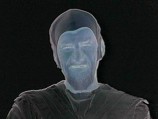 |
| The Black Guardian |
|
 With a season devoid of any classic monsters and with the recent departure of the popular companion Leela there were still plenty of things to watch out for and some new villains and dilemmas for The Doctor to face. With a season devoid of any classic monsters and with the recent departure of the popular companion Leela there were still plenty of things to watch out for and some new villains and dilemmas for The Doctor to face.
 In "The Pirate Planet" there is The Captain who turns out to be just a pawn when The Doctor has the shocking discovery of all the once inhabited worlds that have been drained dry by the true villain Queen Xanxia. "The Androids of Tara" has the interesting concept of not only Romana being the exact likeness of Princess Strella but also the Taran’s ability to construct android replicas. With the villain of the story, Count Grendel, desperate to become the ruler of Tara it soon becomes apparent that he will do anything to get what he wants which does not bode well for Romana. In "The Pirate Planet" there is The Captain who turns out to be just a pawn when The Doctor has the shocking discovery of all the once inhabited worlds that have been drained dry by the true villain Queen Xanxia. "The Androids of Tara" has the interesting concept of not only Romana being the exact likeness of Princess Strella but also the Taran’s ability to construct android replicas. With the villain of the story, Count Grendel, desperate to become the ruler of Tara it soon becomes apparent that he will do anything to get what he wants which does not bode well for Romana.
 With the six segments that make up The Key to Time turning out to be all manor of items. In "The Pirate Planet" the segment turns out to be the largest monster ever that has appeared in the show. But the most shocking discovery is when The Doctor realises that the final segment is a living person – none other than Princess Astra of Atrios – and The Doctor is powerless to stop The Shadow from converting her into one of the segments. With the six segments that make up The Key to Time turning out to be all manor of items. In "The Pirate Planet" the segment turns out to be the largest monster ever that has appeared in the show. But the most shocking discovery is when The Doctor realises that the final segment is a living person – none other than Princess Astra of Atrios – and The Doctor is powerless to stop The Shadow from converting her into one of the segments.
 The introduction of most important villain in this part of the show's history did not occur until the final story "The Armageddon Factor". Having being tasked by the White Guardian to locate all six segments that make up The Doctor is to discover at the end of this story that he could have been working all along for The Black Guardian. The Doctor though realises that the Guardian, that appears on the TARDIS screen, is not the White Guardian and also with the realisation that The Key to Time is far to powerful for any one person to have in their procession he does the only thing left for him to do – to scatter The Key to Time throughout the universe once more. The introduction of most important villain in this part of the show's history did not occur until the final story "The Armageddon Factor". Having being tasked by the White Guardian to locate all six segments that make up The Doctor is to discover at the end of this story that he could have been working all along for The Black Guardian. The Doctor though realises that the Guardian, that appears on the TARDIS screen, is not the White Guardian and also with the realisation that The Key to Time is far to powerful for any one person to have in their procession he does the only thing left for him to do – to scatter The Key to Time throughout the universe once more.
 This season though is more renowned for introducing Time Lady Romanadvoratrelundar - or Romana for short. Romana quickly proved that she was very much a product of Gallifreyan society. Having been a top student at the Academy, Romana looked down on The Doctor, no doubt due to both his status as a renegade and his poorer academic standing than herself. Romana was a haughty, overconfident individual, but was also well-versed in all matters scientific and technological. Because of this The Doctor respected Romana’s intellect. However, her lack of any real-world experience meant that she could never hope to outperform The Doctor during their adventures together. This season though is more renowned for introducing Time Lady Romanadvoratrelundar - or Romana for short. Romana quickly proved that she was very much a product of Gallifreyan society. Having been a top student at the Academy, Romana looked down on The Doctor, no doubt due to both his status as a renegade and his poorer academic standing than herself. Romana was a haughty, overconfident individual, but was also well-versed in all matters scientific and technological. Because of this The Doctor respected Romana’s intellect. However, her lack of any real-world experience meant that she could never hope to outperform The Doctor during their adventures together.
|
|
|
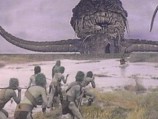 |
| The Kroll |
|
 Going by the viewing figures for the first broadcast of the six stories, that make up this season, the most watched story is "The Power of Kroll" (with 9.4 million viewers). The least watched was "The Stones of Blood" (with 8 million viewers). Neither of which are respectively very high or very low compared to previous seasons. Going by the viewing figures for the first broadcast of the six stories, that make up this season, the most watched story is "The Power of Kroll" (with 9.4 million viewers). The least watched was "The Stones of Blood" (with 8 million viewers). Neither of which are respectively very high or very low compared to previous seasons.
 Strangely in two subsequent Doctor Who Magazine polls "The Power of Kroll" has become the least liked story of this season and "The Stones of Blood" has become the most liked. A very weird swap in popularity that can only be explained by the passing of time. Strangely in two subsequent Doctor Who Magazine polls "The Power of Kroll" has become the least liked story of this season and "The Stones of Blood" has become the most liked. A very weird swap in popularity that can only be explained by the passing of time.
 Overall none of the stories in this season really stand out. The poorest story is "The Ribos Operation". And this is despite the scenes between the White Guardian and The Doctor and the subsequent scenes where The Doctor gets to meet Romana for the first time. A high point is "The Androids of Tara" with its very clever use of Android doubles as well as having Romana having a striking resemblance to Princess Strella who holds the key to whoever becomes the ruler of Tara. Overall none of the stories in this season really stand out. The poorest story is "The Ribos Operation". And this is despite the scenes between the White Guardian and The Doctor and the subsequent scenes where The Doctor gets to meet Romana for the first time. A high point is "The Androids of Tara" with its very clever use of Android doubles as well as having Romana having a striking resemblance to Princess Strella who holds the key to whoever becomes the ruler of Tara.
 The climax of this season is of course "The Armageddon Factor" which demonstrates the futility of war when it leads to ultimate Armageddon. This story though has a number of clever twists. Not only do we get to see a fellow Time Lord from The Doctor’s past but also the dilemma facing The Doctor when it is discovered that a living person is one of the segments they are seeking. But it is the final scenes that are really worth watching. After the Black Guardian is revealed, and vows to seek revenge, The Doctor is forced to fit a randomiser to the TARDIS controls, which means that in future no one, including the Black Guardian, will know where or when the TARDIS is going to materialise. The climax of this season is of course "The Armageddon Factor" which demonstrates the futility of war when it leads to ultimate Armageddon. This story though has a number of clever twists. Not only do we get to see a fellow Time Lord from The Doctor’s past but also the dilemma facing The Doctor when it is discovered that a living person is one of the segments they are seeking. But it is the final scenes that are really worth watching. After the Black Guardian is revealed, and vows to seek revenge, The Doctor is forced to fit a randomiser to the TARDIS controls, which means that in future no one, including the Black Guardian, will know where or when the TARDIS is going to materialise.
|
|
|
|
|
| |
The Lasts (Subject to Future Stories):
| |
| Doctor Who CMS Magazine (In Vision) | Issue 38: The Key to Time - (Released: June 1992) | | Doctor Who Weekly | Issue 42 - (Released: July 1980) | | Doctor Who Magazine - Episode Guide | Issue 154 - (Released: November 1989) | | Doctor Who Magazine - Article | Issue 290 - (Released: May 2000) | | Doctor Who Magazine - Countdown to 50 | Issue 445 - (Released: April 2012) |
| Title | Release Date (UK) | Format | Source | Companions | | The Shadow of Weng-Chiang | August 1996 | Novel | The Missing Adventures | K9 and Romana | | Tomb of Valdemar | February 2000 | Novel | The Past Doctors Stories | Romana | | Heart of TARDIS | June 2000 | Novel | The Past Doctors Stories | Jamie McCrimmon, Victoria Waterfield, The Brigadier, Sergeant Benton and Romana | | Lust: Suitors, Inc. | March 2005 | Short Story | The Big Finish Short Trips 12: Seven Deadly Sins | K9 and Romana | | Life from Lifelessness | June 2007 | Short Story | The Big Finish Short Trips 20: Destination Prague | Susan, K9 and Romana | | The Glarn Strategy | August 2007 | Short Story | The Big Finish Short Trips 21: Snapshots | Romana | | Good Queen, Bad Queen, I Queen, You Queen | March 2008 | Short Story | The Big Finish Short Trips 24: The Quality of Leadership | K9 and Romana | | Stealers from Saiph | June 2009 | Audio | The Big Finish Audio Stories (Companion Chronicles) | Romana | | Ferril's Folly | May 2011 | Audio | The Big Finish Audio Stories (Companion Chronicles) | Romana | | Tales From the Vault | July 2011 | Audio | The Big Finish Audio Stories (Companion Chronicles) | Steven Taylor, Zoe, Jo Grant and 1st Romana | | The Auntie Matter | January 2013 | Audio | The Big Finish Audio Stories (The Fourth Doctor Stories) | Romana | | The Sands of Life | February 2013 | Audio | The Big Finish Audio Stories (The Fourth Doctor Stories) | Romana and K9 | | War Against the Laan | March 2013 | Audio | The Big Finish Audio Stories (The Fourth Doctor Stories) | Romana | | The Justice of Jalxar | April 2013 | Audio | The Big Finish Audio Stories (The Fourth Doctor Stories) | Romana | | Phantoms of the Deep | May 2013 | Audio | The Big Finish Audio Stories (The Fourth Doctor Stories) | Romana and K9 | | The Dalek Contract | June 2013 | Audio | The Big Finish Audio Stories (The Fourth Doctor Stories) | Romana and K9 | | The Final Phase | July 2013 | Audio | The Big Finish Audio Stories (The Fourth Doctor Stories) | Romana and K9 |
|
|
| |
The Doctor and Companions| |  | | The Fourth Doctor |
|
| | | | |
 | | Romana 1 |
| | 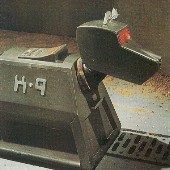 | | K9 Mk II |
| | | | |
|
Magazines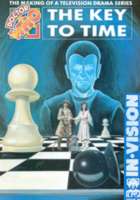 | | Doctor Who CMS Magazine (In Vision): Issue 38: The Key to Time |
|  | | Doctor Who Weekly: Issue 42 |
|  | | Doctor Who Magazine - Episode Guide: Issue 154 |
|  | | Doctor Who Magazine - Article: Issue 290 |
| | | | |  | | Doctor Who Magazine - Countdown to 50: Issue 445 |
|
|
|
|
| |
| |
|
| |
| |
|
| Doctor Who is the copyright of the British Broadcasting
Corporation. No infringements intended. This site is not endorsed by the BBC or
any representatives thereof. |
|